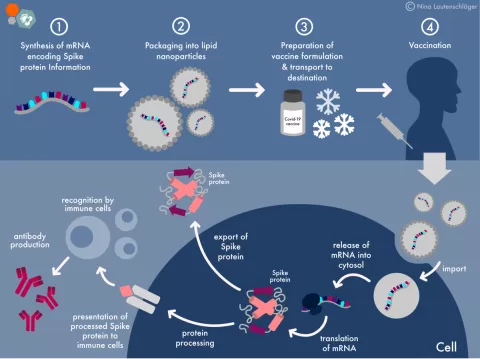Recent breakthroughs in Alzheimer’s research are paving the way for innovative therapies and a deeper understanding of the disease. Emory University’s latest findings reveal the role of amyloid beta as a scaffold, which encourages the accumulation of various Alzheimer’s biomarkers critical to brain cell damage. By examining over 8,000 proteins in both human and mouse brains affected by Alzheimer’s, researchers are uncovering connections between these proteins and the pathologies of this complex disorder. New Alzheimer’s therapies may soon emerge from this research, offering hope amidst the challenges of treatment development. As scientists continue to decode the proteins in Alzheimer’s, the implications extend beyond just understanding this disease, potentially illuminating new avenues for combating other neurodegenerative conditions as well.
Innovative advancements in the field of Alzheimer’s disease research are reshaping our comprehension of this debilitating condition. Through the exploration of neurodegenerative mechanisms, researchers are uncovering critical insights regarding the roles of various proteins and compounds associated with cognitive decline. The latest findings from leading studies underscore the significance of different biomarkers in understanding the disease’s progression and implications for therapy. Additionally, as novel therapies are being developed to combat Alzheimer’s, they are increasingly informed by a holistic approach that challenges earlier models of disease causation. These advancements not only provide hope for treating Alzheimer’s but also enhance our grasp of related neurological disorders.
Understanding Alzheimer’s Disease Mechanisms
Alzheimer’s disease has long posed a challenge for researchers and healthcare professionals alike, primarily due to its complex nature and the unclear mechanisms behind its progression. The recent discoveries from the Emory University Alzheimer’s study elevate our understanding significantly, promoting a paradigm shift in how we interpret amyloid beta’s role in Alzheimer’s disease. Rather than viewing amyloid beta deposits merely as harmful culprits, researchers now suggest these proteins provide a scaffold for other toxic proteins, potentially altering the traditional narrative surrounding Alzheimer’s pathology.
The complete breakdown of brain functions in Alzheimer’s patients can no longer be solely attributed to amyloid beta’s accumulation. This nuanced understanding positions other proteins as vital players in the disease’s progression. The potential for these proteins to act as biomarkers brings new hope for diagnostics and could lead to the identification of new Alzheimer’s therapies that directly target these protein interactions, representing a significant step forward in the quest for effective treatment.
New Alzheimer’s Therapies: The Role of Proteins
The identification of additional proteins co-aggregating with amyloid beta opens a promising avenue for new Alzheimer’s therapies. The proteins midkine and pleiotrophin, highlighted in the Emory research, show that they not only accompany amyloid beta but may also exacerbate its toxic effects, suggesting a dual role that could be exploited therapeutically. Instead of targeting amyloid beta exclusively, future treatments could involve modulating the effects of these newly identified proteins that contribute directly to neurodegeneration.
With over 20 proteins discovered through advanced proteomic techniques, the landscape for Alzheimer’s treatment is evolving. By focusing on protein interactions, as opposed to the singular amyloid cascade theory, researchers may develop multi-faceted approaches that could improve efficacy in managing symptoms or even slowing disease progression. This approach also aligns with the broader trend in neurodegenerative disease research, where understanding the interactions among numerous proteins is essential for developing successful new therapies.
The Importance of Alzheimer’s Biomarkers in Research
Biomarkers play a critical role in understanding Alzheimer’s disease progression and could provide the insights necessary for formulating effective treatments. The proteomic analysis conducted by the Emory University team underscores the importance of identifying unique proteins that co-occur with amyloid beta deposits. By isolating these biomarkers, researchers can form a clearer picture of the molecular landscape of Alzheimer’s, creating opportunities for earlier diagnosis and more targeted intervention strategies.
These findings not only enhance our comprehension of Alzheimer’s disease but could significantly impact how we approach other diseases associated with protein aggregation. As the research community delves deeper into the genetics and biochemistry of these newly identified proteins, there is potential for breakthroughs that extend beyond Alzheimer’s, revealing commonalities in other neurodegenerative disorders and accelerating the introduction of novel therapies across various conditions.
Cognitive Decline and Alzheimer’s: A New Perspective
Cognitive decline, a hallmark of Alzheimer’s disease, has traditionally been attributed to the impacts of amyloid beta accumulation. However, the Emory research team’s findings provide a new perspective on how cognitive functions are disrupted. By revealing that amyloid beta may not act alone but rather in tandem with other proteins, researchers have challenged the conventional framework that has guided Alzheimer’s studies for decades. This redefinition of the problem suggests that focusing solely on amyloid may overlook critical mechanisms responsible for cognitive decline.
As the research unfolds, the implications of understanding cognitive decline as a multifactorial issue become apparent. Treatments that consider the interactions between amyloid beta and other proteins could pave the way for innovative therapeutic strategies that preserve cognitive abilities longer. Such advancements could redefine care for patients suffering from Alzheimer’s, as identifying the right targets may provide avenues for rehabilitation and cognitive support that were previously unavailable.
Clinical Trials and the Need for New Alzheimer’s Research
Despite extensive research efforts over the years, clinical trials targeting amyloid beta have yielded mixed results, often falling short of proving efficacy in patients. This reality underscores the urgent need for new Alzheimer’s research that incorporates fresh findings, like the recent discoveries from Emory University. As researchers unveil the significance of additional proteins in Alzheimer’s pathology, the landscape of clinical testing must adapt accordingly to include these new potential targets.
The shift away from solely targeting amyloid beta reflects a broader understanding that Alzheimer’s is not a linear, but rather a multifaceted disease. By embracing this complexity in clinical trials, researchers may increase the chances of uncovering effective treatments. Such a comprehensive research framework, grounded in the latest findings regarding Alzheimer’s biomarkers, could ultimately lead to therapies that enhance the quality of life for those living with Alzheimer’s disease.
Future Directions in Alzheimer’s Disease Research
Looking ahead, the exciting implications of the Emory University study suggest a roadmap for future directions in Alzheimer’s disease research. The identification of over 20 proteins co-aggregating with amyloid beta not only sheds light on Alzheimer’s mechanisms but encourages researchers to delve deeper into the diverse roles these proteins play in neurodegenerative processes. This could lead to novel therapeutic targets, helping refine our approach to disease management.
Future research should continue to prioritize collaborations across disciplines, integrating insights from molecular biology, neurology, and clinical medicine. As scientists strive to unravel the intricate web of protein interactions, they must also consider the broader impact of these findings on public health. By exploring innovative therapeutic avenues and assessing their implications for other conditions related to protein aggregation, we can significantly advance our understanding and treatment of Alzheimer’s disease.
The Connection Between Alzheimer’s and Other Neurodegenerative Diseases
The findings from the Emory study also suggest a profound connection between Alzheimer’s disease and other neurodegenerative disorders characterized by protein aggregation. By uncovering how amyloid beta interacts with various molecular partners, researchers can draw parallels with diseases like Parkinson’s and Huntington’s, which also exhibit protein aggregation as a central feature of their pathology. This interconnection emphasizes the potential for shared therapeutic strategies that might address multiple conditions.
Understanding these relationships could unveil common pathways underlying neurodegeneration, fostering advancements not only in Alzheimer’s therapies but also in treating a spectrum of related disorders. Research that encompasses these connections may lay the groundwork for pioneering treatments that improve outcomes across various neurodegenerative diseases, emphasizing the critical role of multidisciplinary approaches in unraveling complex biomedical challenges.
Innovative Proteomics: A New Frontier in Alzheimer’s Research
The innovative use of proteomics in the Emory University study highlights its potential as a transformative tool in Alzheimer’s research. By analyzing over 8,000 proteins, researchers are not just isolating markers of disease; they are building a comprehensive map of the molecular changes that occur in the brains of individuals affected by dementia. This approach transcends traditional hypothesis-driven research, encouraging discoveries that could redefine our understanding of Alzheimer’s pathology.
Harnessing the power of proteomics represents a new frontier in biomedical research, one that allows scientists to tackle Alzheimer’s through a holistic lens. As methods improve and more advanced analytical technologies become available, future research will undoubtedly uncover additional key proteins that interrelate with amyloid beta and other identified markers. This comprehensive knowledge could catalyze the development of targeted Alzheimer’s therapies that are grounded in the complexities of disease mechanisms, moving us closer to effective treatment and, ultimately, a cure.
The Role of Funding in Alzheimer’s Research Advancement
The significant findings from the Emory University study have been supported by vital funding from the National Institutes of Health, underscoring the importance of financial backing in advancing Alzheimer’s research. Funding agencies play a crucial role in enabling scientists to explore uncharted territories of neurological health, fostering innovation and facilitating collaborations that yield groundbreaking discoveries. Such investments are not only critical for understanding Alzheimer’s disease but also for driving therapeutic advancements.
Investing in Alzheimer’s research is more important than ever, as the global prevalence of the disease continues to rise. Dedicated funding ensures that scientists have the resources necessary to investigate complex hypotheses and pursue novel therapeutic avenues, like those presented in the recent Emory findings. Ongoing support from governmental and private organizations will be essential for translating these discoveries into clinical practices, ultimately benefiting millions of individuals affected by Alzheimer’s disease.
Frequently Asked Questions
What breakthroughs have emerged from recent Alzheimer’s research at Emory University?
Recent Alzheimer’s research breakthroughs at Emory University highlight new targets and biomarkers for potential therapies. The Emory team discovered that amyloid beta, typically associated with Alzheimer’s, serves as a scaffold for other proteins that may contribute to brain cell damage, challenging previous theories about the disease’s mechanisms.
How do amyloid beta proteins relate to new Alzheimer’s therapies?
Amyloid beta proteins have long been linked to Alzheimer’s, but emerging research suggests they may not be the sole culprits of brain cell damage. The identification of new proteins that co-aggregate with amyloid beta opens avenues for new Alzheimer’s therapies targeting these additional proteins, as they could play a crucial role in disease progression.
What role do biomarkers play in the latest Alzheimer’s research?
Biomarkers are essential in the latest Alzheimer’s research as they provide insights into the disease’s progression and pathology. Emory University’s findings showcase numerous newly identified biomarkers associated with amyloid beta aggregation, thus offering potential targets for innovative Alzheimer’s therapies.
What new proteins were identified in the Emory University Alzheimer’s study?
In the groundbreaking Emory University Alzheimer’s study, researchers identified over 20 new proteins associated with amyloid beta. Notably, proteins like midkine and pleiotrophin were found to accelerate amyloid aggregation, highlighting their potential role in Alzheimer’s pathology and possible new therapeutic targets.
What implications do Emory’s findings have for Alzheimer’s disease treatment?
Emory University’s findings suggest a paradigm shift in understanding Alzheimer’s disease, emphasizing the complex interplay of proteins beyond amyloid beta. This new perspective may facilitate the development of novel treatments that target not only amyloid beta but also the newly identified proteins, bringing hope for more effective Alzheimer’s therapies.
| Key Point | Details |
|---|---|
| New Understanding of Alzheimer’s | Emory University researchers challenge existing theories about Alzheimer’s origins. |
| Role of Amyloid Beta | Amyloid beta may act as a scaffold for other proteins causing brain damage rather than being the primary cause itself. |
| Research Findings | Identified over 20 proteins that co-accumulate with amyloid beta in Alzheimer’s and mice models. |
| Potential New Therapies | Midkine and pleiotrophin proteins might influence Alzheimer’s pathology, opening doors for new treatments. |
| Complexity of Alzheimer’s | Research highlights the intricate changes in the brain over decades, challenging the linear amyloid cascade hypothesis. |
Summary
Alzheimer’s research breakthroughs are paving the way for a new understanding of this complex disease. The recent findings from Emory University significantly challenge prior notions about the mechanisms of Alzheimer’s, particularly the role of amyloid beta in brain cell damage. By identifying new target proteins that may drive Alzheimer’s pathology, researchers are not only positioning themselves to develop innovative therapies for Alzheimer’s but also impacting treatments for a range of related disorders. This evolving landscape in Alzheimer’s research shows promise in overcoming the challenges of finding effective treatments for this devastating condition.
The content provided on this blog (e.g., symptom descriptions, health tips, or general advice) is for informational purposes only and is not a substitute for professional medical advice, diagnosis, or treatment. Always seek the guidance of your physician or other qualified healthcare provider with any questions you may have regarding a medical condition. Never disregard professional medical advice or delay seeking it because of something you have read on this website. If you believe you may have a medical emergency, call your doctor or emergency services immediately. Reliance on any information provided by this blog is solely at your own risk.







